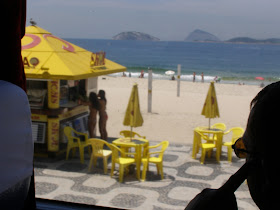 |
| If you're looking for authentic, old-fashioned fun, a vintage restored town and beautiful scenery, head for Virginia City, Mt. |
 |
A little train trip awaits, just a few miles between
Virginia City and Nevada City, by a narrow-gauge railroad. |
OLD WEST FLAVOR IS KICKED UP A NOTCH IN LIVELY, PICTURESQUE OLD-TIME TOWNS
STORY By CHRISTENE MEYERS
PHOTOS By BRUCE KELLER
MY AFFECTION for Virginia City and Nevada City dates a half century back to my childhood.
 |
The old-fashioned fire truck run by Scott McClintic
will give you history and a pleasant tour of Virginia City. |
 |
Hiking in the nearby woods
is another benefit to a road trip. |
As I grew up in the 1950s and 1960s, our family made an annual pilgrimage to this old-time treasure in southwest Montana. It's historical beginnings go back to the gold rush days of the mid 1800s. Much of the place has retained the flavor of that rich, sometimes rowdy time when Montana was discovered by seekers of fortune and the accompanying riff-raff.
 |
The Virginia City Players have been around for 67 seasons,
with the talents of Bill Koch, present artistic director. |
Thanks to philanthropists Charles and Sue Bovey, today's Virginia City recaptures the times. Bovey began restoring the town with vintage buildings and goods shortly after World War II. He was fascinated by the period, when sluices lined the gulch and "cities" blossomed as trading and amusement centers. Miners flooded in, and others followed, in the tradition of supply and demand: ladies of the evening, criminals, cooks, vigilantes, shop keepers, bar tenders, cleaners, and grocers who could command as much as $2 for a single egg. Virginia City was the best known of towns that sprung up along the gulch. It is sole survivor.
NO WONDER so many Montanans revere Virginia City and like to show it off. It's wonderfully "frozen in time," fun to share with visitors who might enjoy strolling a colorfully restored pioneer mining camp.
 |
The Brewery Follies under the gifted direction of Mike Verdon are a must,
with a fast-paced, racy show sure to entertain. A fine cast, talented
musical director and the brewery environment guarantee a good time. |
We traveled back in time -- pre-cell phones, pre-computers, pre-television and telephone to celebrate the Boveys, of the General Mills fortune. They bought up old buildings and repaired failing existing structures to preserve the spirit of the 1865 capital of the Montana Territory.
Virginia City had declined to ghost town status when Bovey and his wife began to pursue their passion. By the early 1950s, people were visiting Virginia City, with its iconic Bale of Hay Saloon, the Virginia City Players in the Opera House, and the venerable Fairweather Inn.
 |
Lodging in Nevada City is rustic, but comfortable.
|
WE NEVER miss Bill Koch's Virginia City Players, a must for theater lovers and a time honored part of the lore and lure of Virginia City. The Players' show in the old Opera House includes a spirited vaudeville act -- cameos in the style of the Victorian music hall. Their ambitious three-part season continues to September, with good old-fashioned family fun.
For adults, the Brewery Follies offers cutting-edge comedy, lively music and a tour de force of comedy and satire featuring well acted sketches and songs by a diverse cast with "guest appearances" courtesy the talented Mike Verdon, delightful and right-on as both Donald Trump and Elvis.
 |
Carefully restored Victorians are part of the
allure of Virginia City. Most are B&Bs. |
The Follies offers a sophisticated, smartly written comedy cabaret in the 1863 brewery. There, H.S. Gilbert made his mark and money after immigrating from Germany to quench the boom town's thirst.
NOW ON the historic register, the towns are owned by the state of Montana. Showing off an entire town as a National Historic Landmark is unique, so give your guests a treat.
We were thrilled to discover the Wells Fargo Steakhouse serves a tasty steak and wonderful appetizers, a nice Caesar salad and several fish and Italian offerings. There's also a pizza parlor, candy store, ice cream place, a couple other bars and cafes. Pop in Rank's Mercantile, which has the feeling of an old-fashioned, artfully arranged sundries shop, with unique souvenirs, clothing, toys, books, gifts and specialty groceries.
 |
Rome, Greece, Bozeman? A wonderful show is up at Museum of the Rockies.
"The Villas of Oplontis" brings us to Bozeman and the Museum, with a look
at a thriving villa destroyed by the Mount Vesuvius eruption. An imaginative
show of artifacts and antiquities awaits through December 31. |
One strolls the main street and peeks into the past: an old barbershop, a clothing store, a blacksmith's shop, drug store, mostly built before 1900.
Heritage markers give insights and information about the period displays, and you can dress up in period costumes to create a special holiday card, or souvenir.
THERE'S ALSO a Boothill, a cemetery where criminals and lawmen take their final rest.
UP NEXT: "The Villas of Oplontis" is a wonderful exhibit at Museum of the Rockies, which we visit next. The wonderful Museum has a stunning planetarium and living history farm, internationally recognized fossil and dinosaur exhibit, plus much more. The terrific new show about the life of a village near Pompeii is fascinating. Remember to explore, learn and live.


































